
|
|
|
|
|
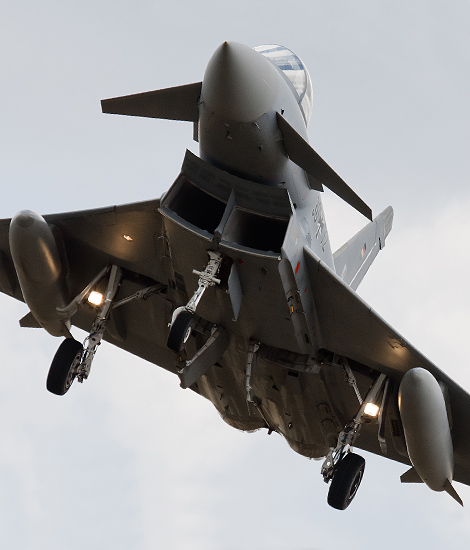
|
Jagdbombergeschwader 33; Büchel, July 12, 2012
Fighter-Bombers with a Mission; Text and Photograph’s by Alex van Noye
On Thursday, July 12, 2012, a visit to Büchel Air Base was on the program. Jagdbom- bergeschwader 33 (Fighter-Bomber
Squadron 33) is stationed at this airbase. This unit is currently equipped with the Tornado IDS. The Tornado’s of this
unit can be used for both conventional and nuclear bombardments.
The German airbase Büchel is located near Cochem-Zell in the province of Rhineland-Phalz. Jagdbombergeschwader 33
(JBG-33) is stationed at this German airbase. Büchel is the only active German airbase which is equipped with nuclear
weapons. The weapons are from the United States and are deployed here to be used by JBG-33 in the NATO context if necessary.
The history of Fliegerhorst Büchel began in 1954. The airbase was founded by the French in this region in Germany after
the Second World War. The French would not stay long as they had enough work to do; they had to re-build their own country
after the war. Shortly after the founding of the air base, it was returned to the German authorities on June 6, 1955. Over
250 soldiers were based at the air base in 1957; also the infrastructure of the airfield was dramatically improved. In the
same year, the Waffenschule der Luftwaffe 30 was created. The main task of this school is the training of arm specialists
for the Luftwaffe. The trained specialists will be spread over various operational units in Germany after their training.
The weapons school used various types of aircraft since 1957. These aircraft were of the type Republic F-84F Thunderstreak,
Lockheed T-33 T-Bird and North American T-6 Texan. From June 1958, the weapon school was renamed to Jagdbombergeschwa- der
33 (JBG-33). Nowadays Büchel is one of the major air bases of the German air force. The weapon school is now a part of
JBG-33; weapon specialists are therefore still being trained on this basis.
JBG-33 received also an offensive role after the Waffenschule der Luftwaffe 30 was renamed to JBG-33 in 1958. JBG-33
would completely be specialized in attacking ground targets. The majority of the weapons school was moved to Fürstenfeldbruck
Air Base near Munich. JBG-33 was at that moment equipped with the Republic F-84F Thunderstreak which were delivered to
the Germans by the Americans as part of the Marshall Plan. The activation of JBG-33 was the rebirth of an offensive
German Air
|
|
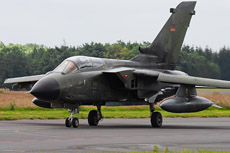
|
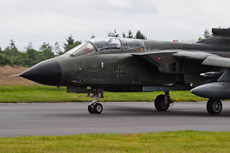
|
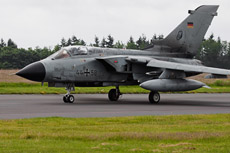
|
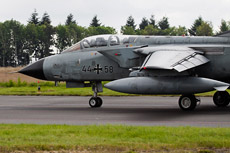
|
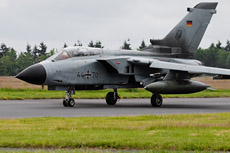
|
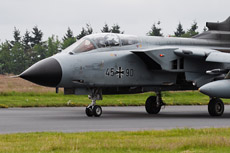
|
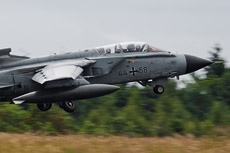
|
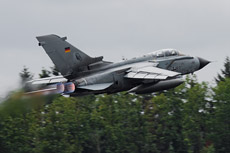
|
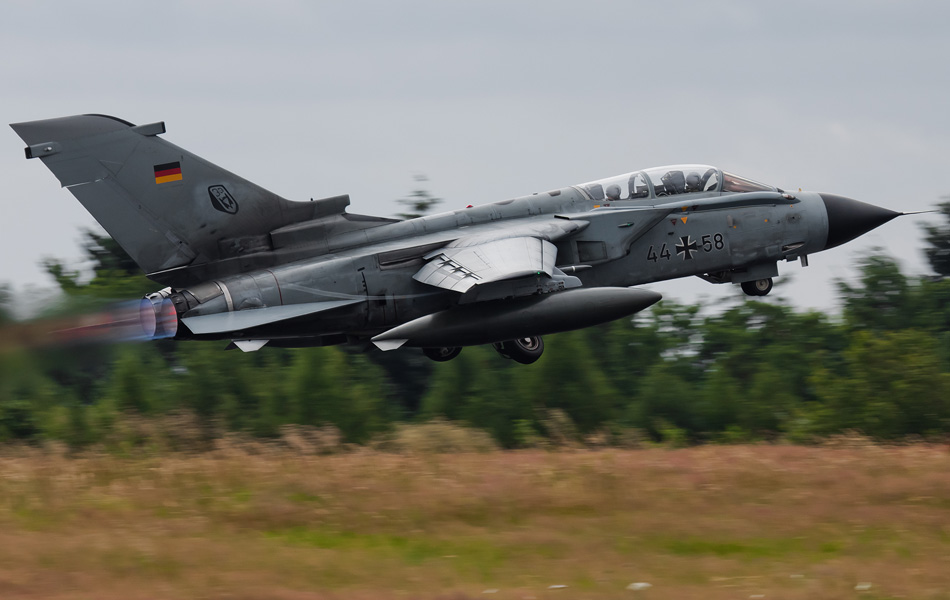
|
Force. Until now, the Germans were not allowed to have an offensive air force as a result of World War II. From
July 1, 1958, the West German Luftwaffe belonged to the NATO. The first task of the unit was a tactical offensive
task. The first deployment took place after one year in 1959; the unit was deployed to Bandirma in Turkey. The pilot
barracks Brauheck were built in 1959 and are located 12 kilometers from the base. From 1961, the barracks were annexed
by the city of Cochem. Cochem was the first garrison town in Germany since World War II. The first supersonic jet which
would fly from Büchel was the Lockheed F-104G Starfighter. The first Starfighters entered service at JBG-33 in August
1962. The Starfighter was not an easy plane to fly. More than 300 of the almost 1,000 aircraft were crashed. The
applicable nickname of the Starfighter was also known as the Widowmaker.
The Starfighter has served at Büchel airbase for a period of 23 years. In total 231,900 flight hours were made on the
F-104G Starfighter by the German Air Force. JBG-33 stopped flying the Starfighter from May 30, 1985. The Panavia Tornado
was the successor of the Lockheed F-104G Starfighter. The first Tornado was delivered at Büchel in September 1985. JBG-33
was equipped with the Tornado IDS; this variant of the Tornado is designed to attack ground targets. The Tornado IDS was
designed as a tactical attack fighter for low altitudes at the end of the 70s. The Tornado was designed by a consortium
of British, German and Italian aircraft manufacturers. The Tornado took in Germany the role of the fighter-bomber
completely over from the Starfighter. JBG-33 is currently divided into 3 groups; each group has its own tasks. The first
group is the Flugbetriebstaffel. This group includes both flying Staffels of JBG-33. The second group within JBG-33 is
the Technical Group. This group is responsible for the technical maintenance of the Tornado IDS and all the systems
which are necessary for the aircraft to fly. Besides the technical maintenance, the Technical Gruppe includes also a
technical school where students are trained to avionics specialists. The last group is an air base group. This group
contains all the units which are required to operate an airbase safely. This group contains the surveillance, security
and air traffic controllers. JBG-33 has been deployed several times in NATO context to various crisis areas.
JBG-33 has besides the conventional attack strike role as the only German Air Force unit also a nuclear mission. Germany
is from origin not a nuclear power when it comes to weapons. Only a few countries in the world have nuclear weapons,
these countries are; the United States, Russia, China, Great-Britain, France, Pakistan, India and North Korea. Besides
these nuclear powers, there are some countries in Europe which can use nuclear weapons when needed. These nuclear weapons
are from the United States and are stored in the friendly countries. These friendly nations can use these weapons in
NATO context during a nuclear war scenario. The presences of these nuclear weapons in these friendly countries are
officially denied. However, it is also never denied they are stored at several European airbases. Some allied NATO
countries which probably have nuclear weapons in their arsenal, are; Belgium, Germany, Greece, the Netherlands and
Turkey. The Tornado’s from Büchel train annually with the nuclear partners from Europe. The Tornado’s of the Luftwaffe
are suitable to carry the B61 thermonuclear bomb. This weapon was designed in the United States in 1961. This bomb
entered service from 1968. The weapon is a conventional bomb with a force of almost 340 kilotons. The Tornado’s at
Büchel will serve in both the conventional and the nuclear role in the upcoming 10 years. The Tornado is likely going
to be replaced by the EF2000 Eurofighter on this base in the future. The Tornado IDS is still performing well until then.
|
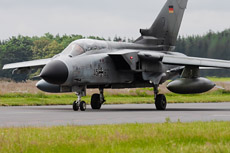
|
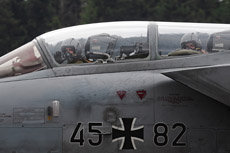
|
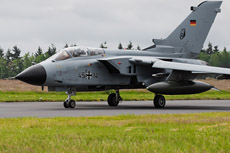
|
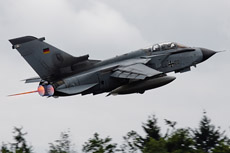
|
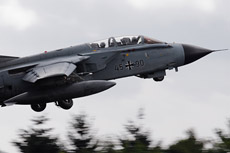
|
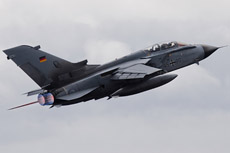
|
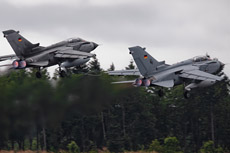
|
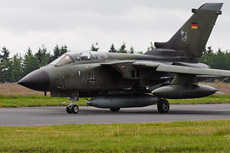
|
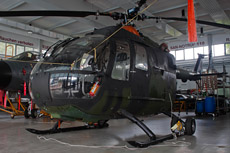
|
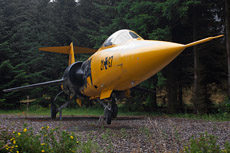
|
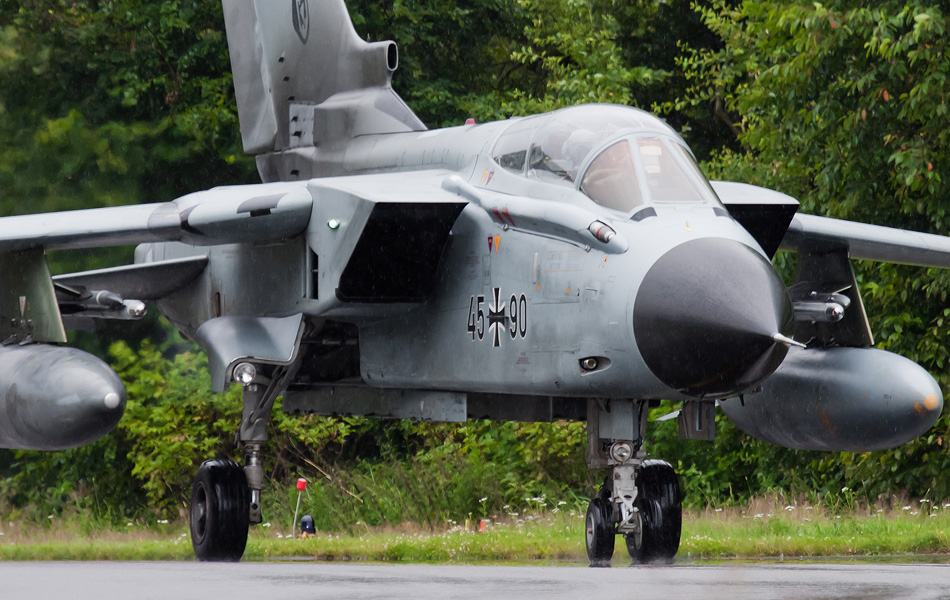
|
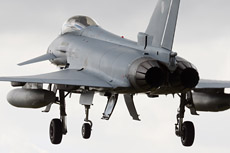
|
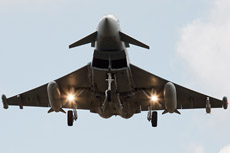
|
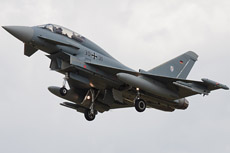
|
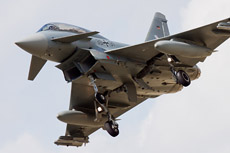
|
|
|

|







